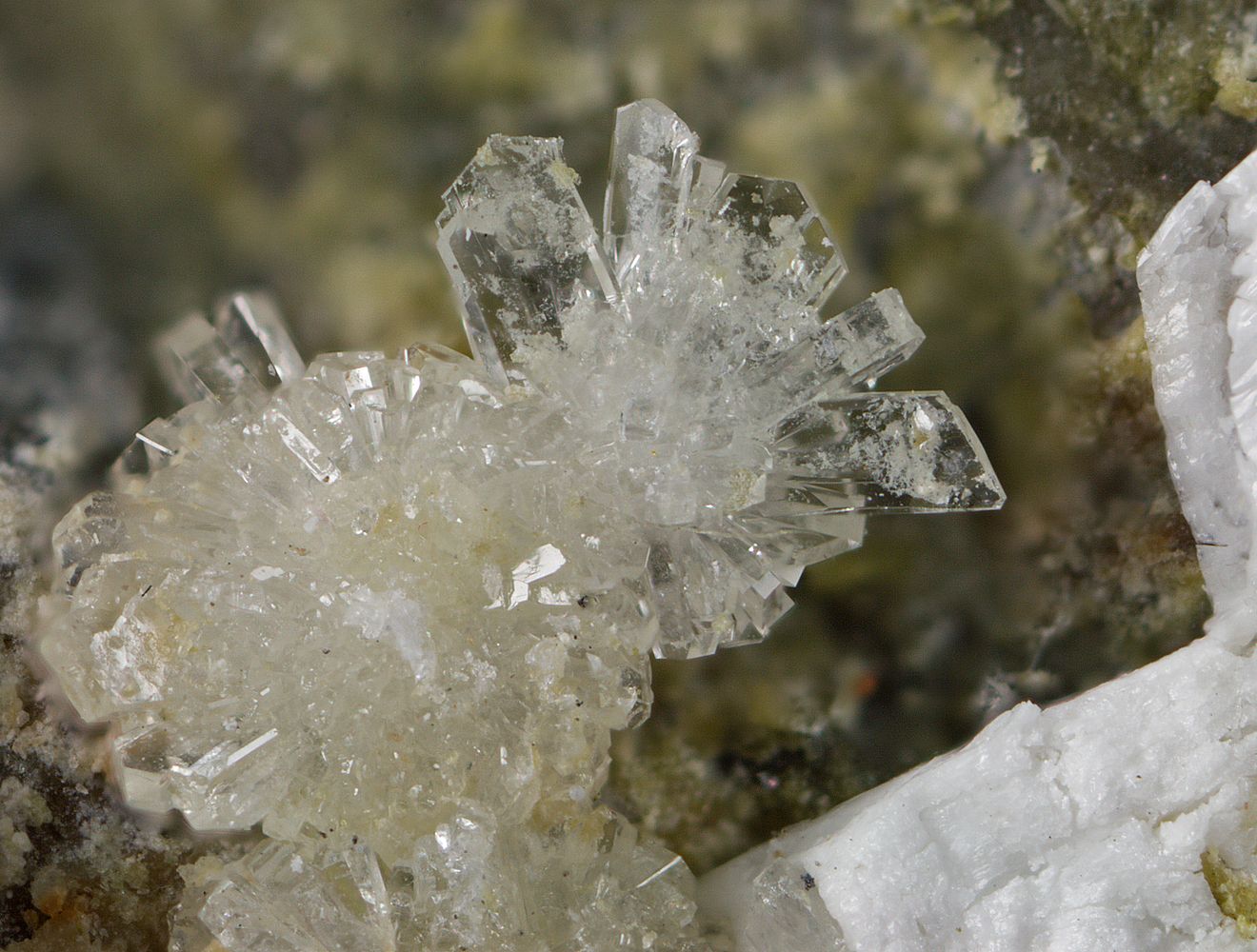
The human reproductive system is an intricate and fascinating aspect of our biology. It is responsible for the propagation of our species and the continuation of life as we know it. From the moment of conception to the birth of a newborn baby, the reproductive system plays a crucial role in the development and growth of a new life.
In this article, we will explore 18 fascinating facts about the human reproductive system. From the unique structures and functions of male and female reproductive organs to the intricate process of fertilization and pregnancy, there is much to learn and marvel at when it comes to our reproductive abilities.
Whether you have a keen interest in biology or simply want to deepen your understanding of human anatomy, this article will provide an intriguing insight into the world of the human reproductive system.
Key Takeaways:
- The human reproductive system begins developing before we are even born, and it’s responsible for creating new life. It’s like a magical process that starts from the very beginning of our existence!
- The male and female reproductive systems have unique and fascinating functions, from producing millions of sperm cells to nurturing and supporting the developing embryo. It’s like a beautiful dance of nature that brings new life into the world.
The human reproductive system begins its development during embryonic stages.
During the early stages of embryonic development, the reproductive system starts to form. The gonads, which are the primary sex organs, develop into either testes or ovaries, depending on the genetic sex of the individual.
The average male produces millions of sperm cells every day.
The male reproductive system is continuously producing sperm cells through a process known as spermatogenesis. On average, a healthy adult male can produce millions of sperm cells on a daily basis.
The female reproductive system goes through a monthly ovulation cycle.
Each month, the female reproductive system goes through a series of changes known as the menstrual cycle. During this cycle, an egg is released from one of the ovaries in the process of ovulation.
The fertilization of an egg usually occurs in the fallopian tubes.
After ovulation, the released egg travels through the fallopian tubes. If it encounters sperm cells along the way, fertilization can occur, leading to the formation of a zygote.
The uterus is responsible for nurturing and supporting the developing embryo.
Once fertilization occurs, the zygote implants itself into the uterine lining. The uterus provides the necessary environment and nutrients for the embryo’s growth and development throughout pregnancy.
The male sex hormone testosterone plays a crucial role in reproductive system function.
Testosterone, primarily produced in the testes, is responsible for the development of male secondary sexual characteristics and plays a key role in sperm production.
The clitoris is the only organ in the human body solely dedicated to pleasure.
The clitoris is a highly sensitive organ located at the top of the vulva. It serves no other purpose than to provide sexual pleasure, making it unique in its function.
The menstrual cycle is regulated by a complex interplay of hormones.
Hormones such as estrogen and progesterone play a crucial role in regulating the menstrual cycle. Fluctuations in hormone levels throughout the cycle result in various physiological and emotional changes.
The placenta acts as a lifeline between the mother and the developing fetus.
The placenta, which develops during pregnancy, facilitates the exchange of nutrients, oxygen, and waste products between the mother’s bloodstream and the developing fetus.
The production of breast milk is triggered by the hormone prolactin.
After childbirth, the hormone prolactin stimulates the mammary glands to produce breast milk. This ensures the infant’s nourishment during the early stages of life.
The average length of pregnancy is approximately 40 weeks.
From conception to birth, the human gestation period is typically around 40 weeks. This period is divided into three trimesters, each characterized by specific developmental milestones.
The sperm cell is the smallest cell in the human body.
Although sperm cells are incredibly small, they are highly specialized for their important role in reproduction. Their size allows for efficient movement and delivery of genetic material.
The average number of eggs a female is born with is around 1-2 million.
At birth, a female already has a finite number of eggs, which diminish over time. By the time she reaches reproductive age, only a fraction of these eggs remain.
The female orgasm may assist in sperm transport.
Studies suggest that female orgasms may help facilitate the movement of sperm into the reproductive tract, improving the chances of fertilization.
The testes are located outside the body to maintain optimal sperm production temperature.
The testes are external to the body in the scrotum to ensure the ideal temperature for sperm production, which is slightly lower than the body’s core temperature.
Sperm can survive in the female reproductive tract for up to five days.
Once deposited in the female reproductive tract, sperm cells can survive for several days, increasing the chances of successful fertilization if ovulation occurs within that timeframe.
The clitoris and penis share a similar structure.
The clitoris and penis both contain erectile tissue and have similar embryonic origins. They are homologous structures, differing in size and positioning.
The human reproductive system is regulated by both nature and nurture.
While genetics play a significant role in determining reproductive system characteristics, environmental factors, lifestyle choices, and overall health also impact its functioning.
These 18 fascinating facts about the human reproductive system highlight the intricacies and marvels of this vital aspect of human life. Understanding the complexities of our reproductive system can deepen our appreciation for the miracle of life and inspire us to make informed choices regarding our reproductive health and well-being.
Conclusion
In conclusion, the human reproductive system is truly remarkable, playing a crucial role in the creation of new life. It involves a complex interplay of hormones, organs, and processes that ensure the continuation of our species. Understanding the intricacies of the reproductive system is not only fascinating but also important for our overall health and well-being.From the development of eggs and sperm to the intricate process of fertilization and pregnancy, the reproductive system is a marvel of nature. It is essential for the perpetuation of human life and is a testament to the incredible wonders of biology.Exploring the various components and functions of the human reproductive system opens up a world of knowledge and appreciation for the incredible capabilities of our bodies. So next time you marvel at the miracle of life, remember the intricate workings of the human reproductive system that make it all possible.
FAQs
Q: How does the human reproductive system work?
A: The human reproductive system involves the production of eggs in females and sperm in males. During sexual intercourse, sperm is introduced to the female reproductive system, where it travels through the fallopian tubes to potentially fertilize an egg. If fertilization occurs, the fertilized egg implants in the uterus and develops into a fetus.
Q: What are the primary organs of the human reproductive system?
A: In females, the primary organs are the ovaries, fallopian tubes, uterus, and vagina. In males, the primary organs are the testes, epididymis, vas deferens, and penis.
Q: Can the human reproductive system be affected by diseases or disorders?
A: Yes, the reproductive system can be affected by various diseases or disorders such as infertility, sexually transmitted infections (STIs), polycystic ovary syndrome (PCOS), endometriosis, and prostate issues in males.
Q: Are there any natural methods to boost fertility?
A: Yes, maintaining a healthy lifestyle, eating a balanced diet, managing stress levels, and avoiding harmful substances such as smoking and excessive alcohol consumption can help boost fertility.
Q: Is it possible to conceive at any age?
A: While the peak reproductive years are typically between the late teens and early 30s, it is possible to conceive at any age as long as a person is still ovulating and has a healthy reproductive system. However, fertility tends to decrease as a person gets older.
Intrigued by the wonders of human reproduction? Continue exploring this miraculous process with our article "8 Astonishing Facts About Reproductive System." From the intricate dance of hormones to the incredible journey of sperm and egg, you'll be amazed at the complexities and marvels of this essential biological system. Dive deeper into the fascinating world of reproduction and expand your knowledge with these mind-boggling facts that showcase the incredible capabilities of the human body. Get ready to be astounded by the remarkable feats of nature as you unravel more secrets of the reproductive system.
Was this page helpful?
Our commitment to delivering trustworthy and engaging content is at the heart of what we do. Each fact on our site is contributed by real users like you, bringing a wealth of diverse insights and information. To ensure the highest standards of accuracy and reliability, our dedicated editors meticulously review each submission. This process guarantees that the facts we share are not only fascinating but also credible. Trust in our commitment to quality and authenticity as you explore and learn with us.


